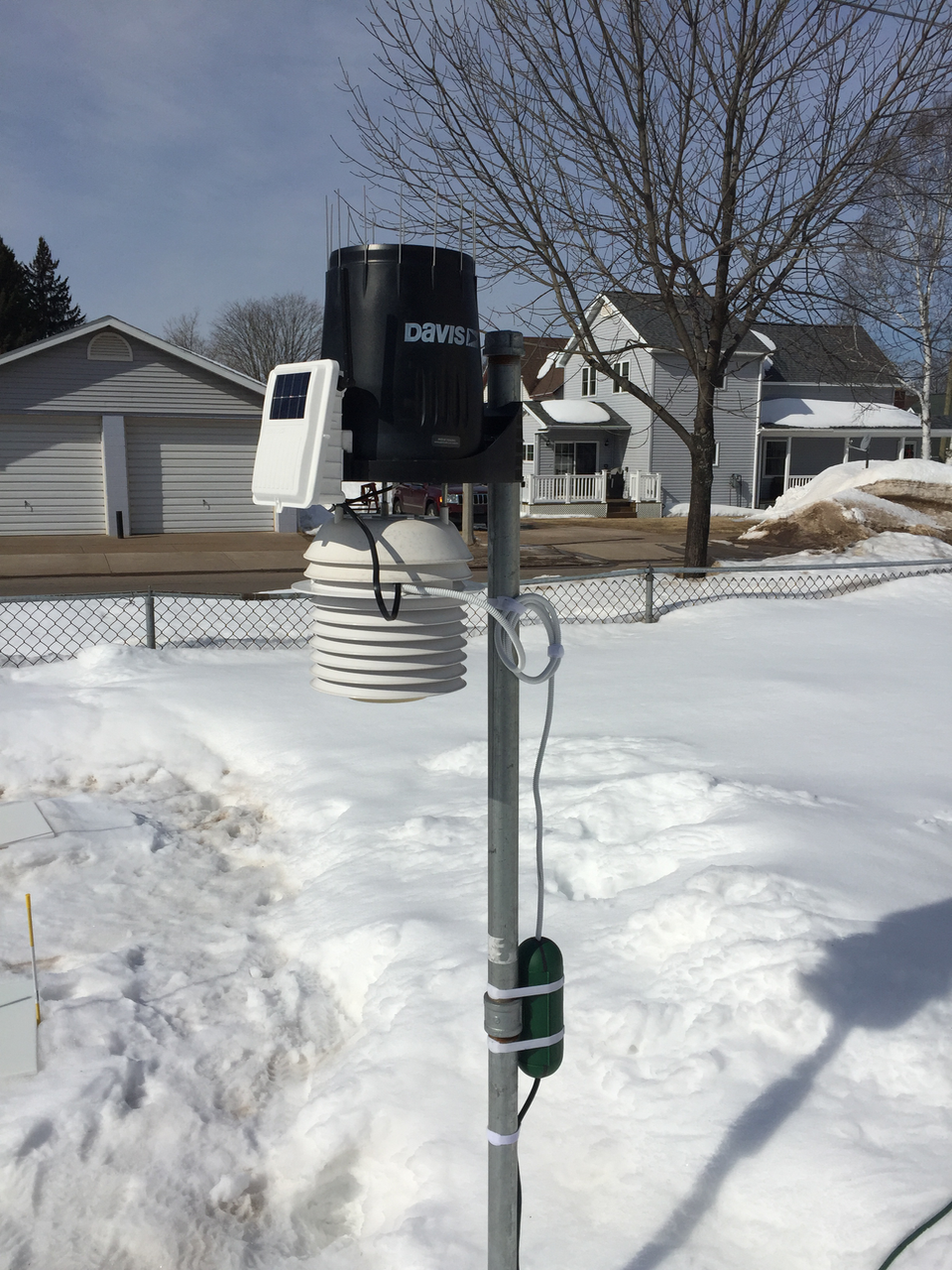
There was a Problem?
So perhaps you’ve noticed lately on sunny days forecasted highs have been lower than the actual highs by several degrees. Well… it turns out that’s not entirely true.
During the deepest part of winter when the polar vortex was regularly occurring (late December into January), we were having equipment issues. Normally, we measure temperatures inside an enclosure that has a fan running on solar power during the day and batteries at night. Unfortunately, the weather destroyed the electronics that controlled the battery charging, among other casualties.
As a quick fix, we installed a passive (fan-less) shield for our sensor. Passive shelters are fine during our normally very cloudy, windy winters. Wouldn’t you know it, the sun decided to show up and, along with it, gentle breezes! That makes for beautiful winter days in Marquette. It is also a recipe for solar-induced sensor errors.
The snow acts like a mirror to the sun and the reflected radiation gets into the sensor and heats it up. How much? A rough estimate, based on before and after tests of running with and without a fan, is 3-5 degrees F. Studies have shown that, in fact, on completely calm, sunny days over a fresh blanket of snow, errors can reach up to 18 deg F!
The Solution
Those same studies also prescribe running a fan to generate air movement across the sensor to combat sensor warming.
We had planned to resurrect the fan-aspirated radiation shield during warmer weather. Seems that weather just arrived!
We needed something reliable. Mechatronics makes an AC fan that’s rated down to -40F, designed to resist moisture, and boasts 50,000 hours mean time between failures. It draws only 11W of power. Perfect!
A big shout out goes to Randy for field testing this solution in the hot Nebraska summers (90s are common) and freezing cold winters (frequently below zero). He even put a heat gun to the fan to be sure it wasn’t generating heat into the sensor chamber.
With 24 cubic feet per minute of air movement, radiational heating and cooling of the sensor should be negligible. We look forward to better alignment between our measured highs and lows and forecasted numbers.* We’re already seeing improvements over the last 24 hours.
* You can always check the accuracy of forecasts that appear on the home page.
